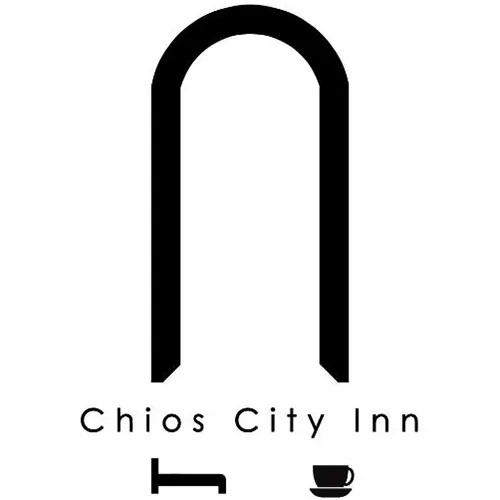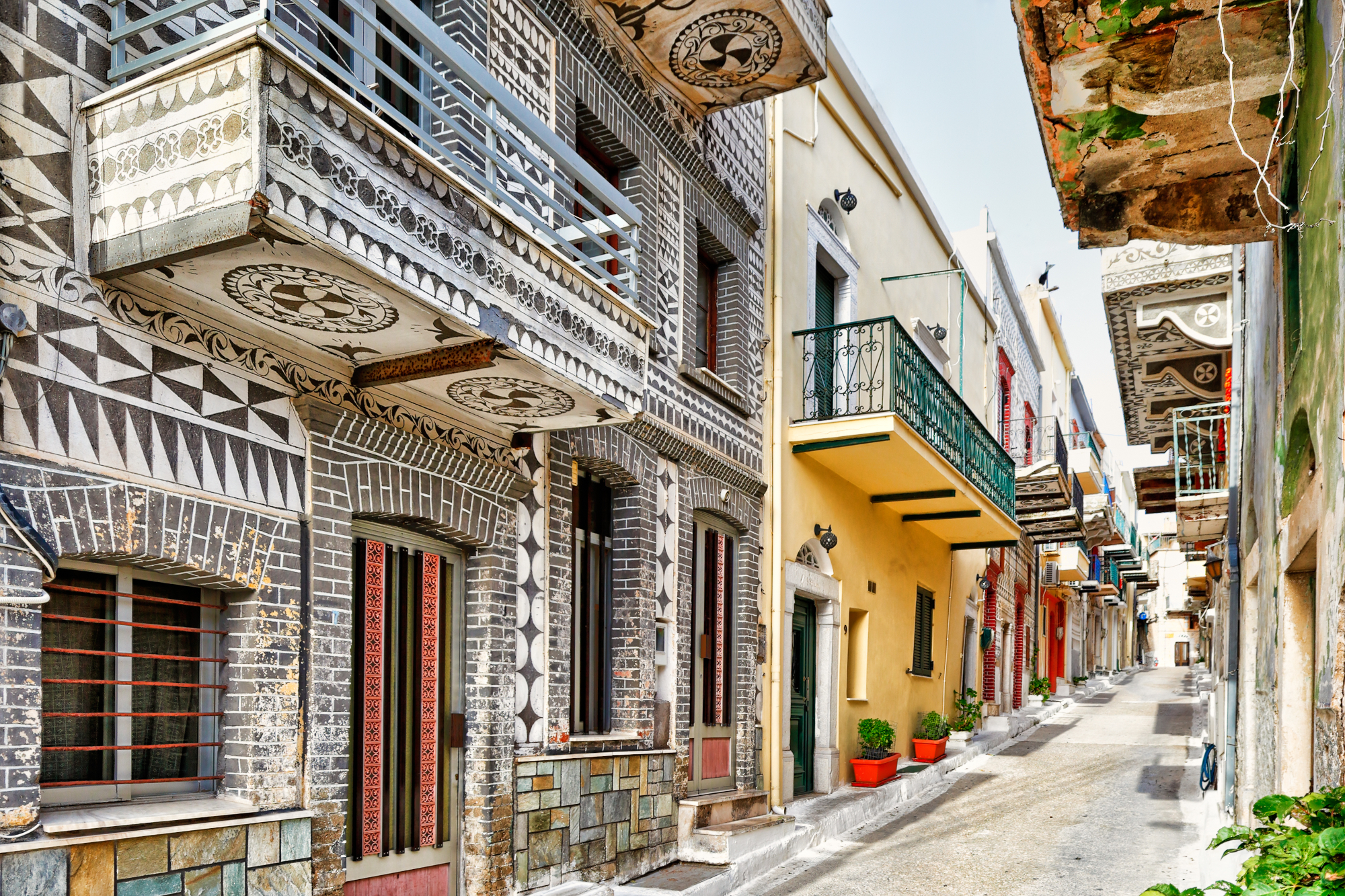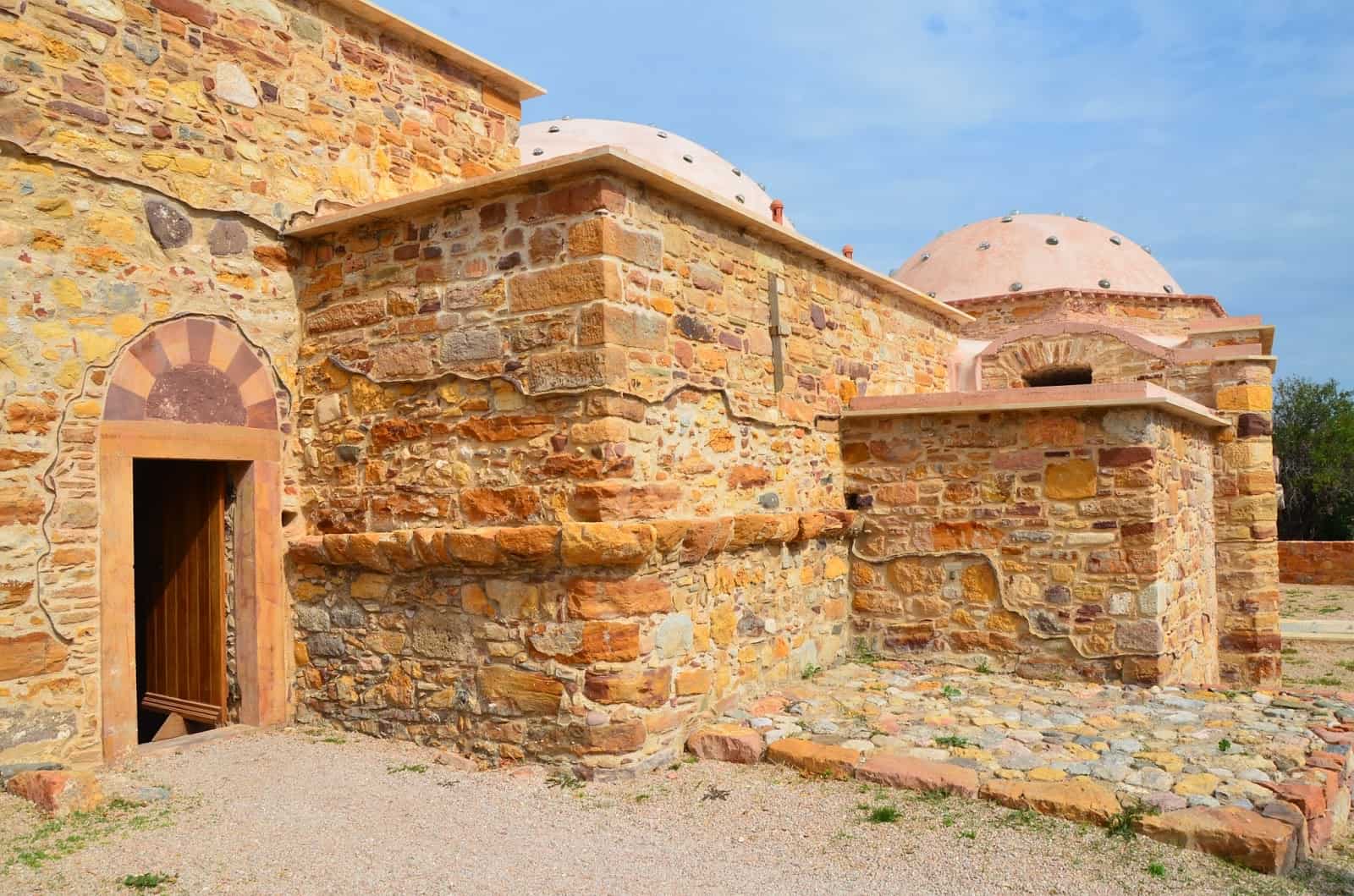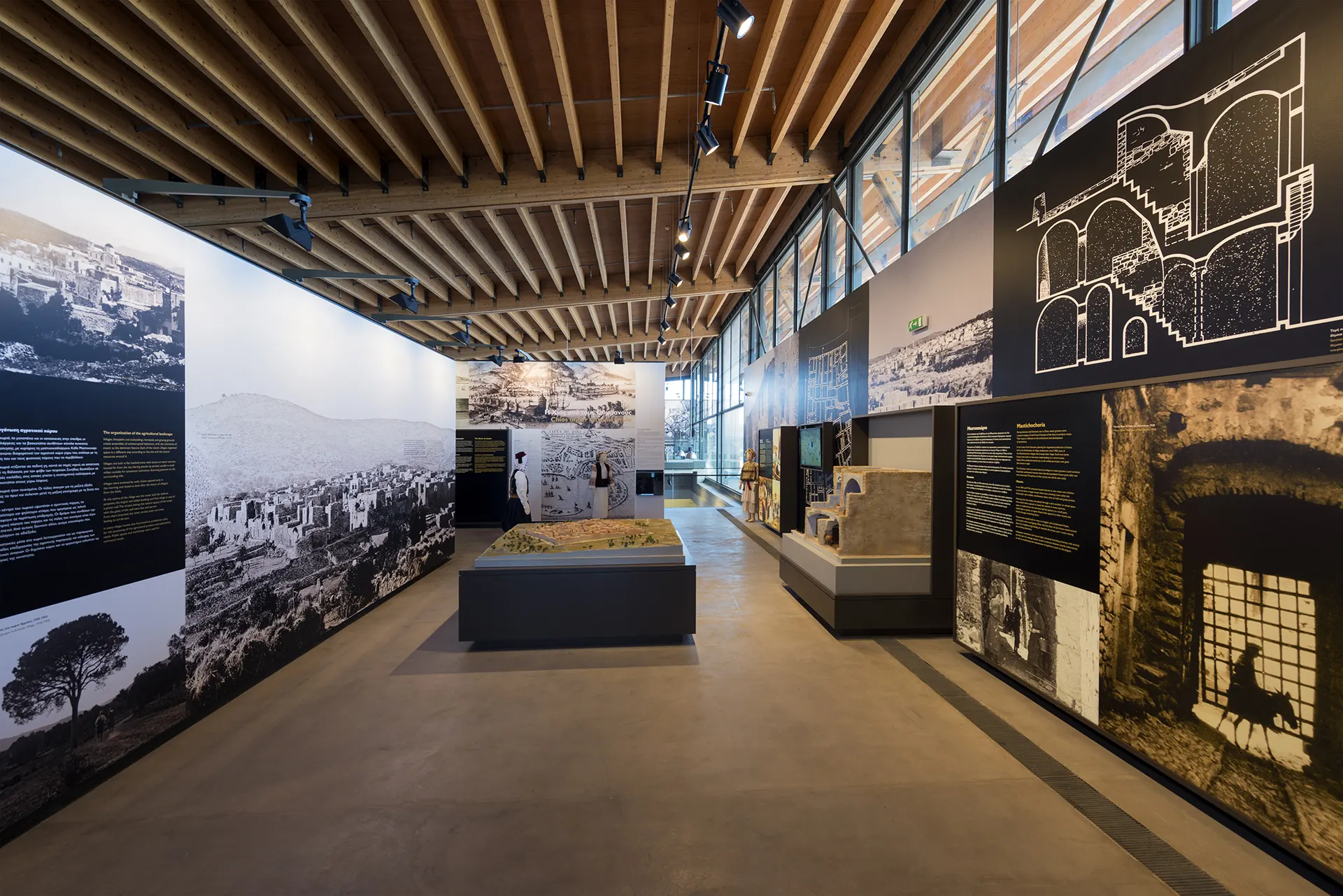Nestled in the southern part of Chios Island, Pyrgi stands as a living testament to the island’s rich medieval past and artistic heritage. Known as the “painted village” of Chios, Pyrgi is celebrated for its striking and unusual architecture, where nearly every building facade is adorned with black-and-white geometric patterns known as xysta. These decorative motifs are meticulously etched into the plaster, creating mesmerizing designs that transform the entire village into an open-air gallery. Walking through Pyrgi feels like stepping into a bygone era—one that has been carefully preserved and continues to thrive through its traditions, architecture, and way of life.
The village was established during the Byzantine period and was later fortified by the Genoese in the 14th century. These Genoese influences are still evident today in the layout and architecture. Pyrgi is built in a dense, labyrinthine pattern with narrow, winding alleys and connected houses that form a kind of protective barrier. This design was not accidental; it was intended to shield the villagers from pirate attacks, which were a constant threat in the medieval Aegean. The high walls, few windows, and enclosed courtyards are reminiscent of fortress architecture, giving the village a distinct defensive character.
What truly sets Pyrgi apart, however, is its unique decorative technique. The xysta—crafted by scratching away the top layer of plaster to reveal the dark layer beneath—create a vivid contrast that covers entire building exteriors. These patterns often include flowers, birds, spirals, diamonds, and other symbols, each holding cultural or personal significance. The technique is believed to have originated in Italy and was adapted by local artisans to create a distinctly Chian art form. Pyrgi is the only place in Greece where this practice is widespread and still actively maintained by the villagers.
Beyond the stunning facades, Pyrgi offers visitors a deep cultural experience. The village is home to several historic churches, the most prominent of which is Agioi Apostoloi, a 13th-century Byzantine church that echoes the architecture of the famous Nea Moni Monastery. This small, stone-built church is richly decorated with frescoes and serves as a spiritual and historical focal point of the community. Another noteworthy church is Agia Kyriaki, known for its imposing bell tower and panoramic views of the village.
Life in Pyrgi has a distinctly traditional rhythm. While wandering its alleys, you’ll encounter local residents sitting outside their homes, embroidering, shelling almonds, or simply exchanging stories. The villagers are known for their hospitality and are often happy to share anecdotes about the village’s history, customs, and architecture. Don’t hesitate to strike up a conversation—many speak enough English to offer insights into the daily life and legacy of Pyrgi.
The village also plays a key role in Chios’s famed mastic production, as it lies within the Mastihohoria (mastic villages) region. Mastic, the aromatic resin harvested from the mastic trees native to southern Chios, is a Protected Designation of Origin (PDO) product used in everything from sweets and liqueurs to cosmetics and medicine. You can often spot mastic trees around the village, and during harvest season (typically late summer), you may even see locals collecting the resin droplets in a process that has remained unchanged for centuries.
Visiting Pyrgi is not only about admiring its art and architecture—it’s also about experiencing a way of life that balances preservation with quiet vitality. The village hosts several traditional festivals, particularly during religious holidays and summer months, featuring local music, dancing, and, of course, mastiha-based delicacies.
Whether you are a history enthusiast, an art lover, or simply a curious traveler, Pyrgi offers a profound and unforgettable journey into the heart of Chios’s cultural soul. It’s a place where the past lives on in every wall and every face, where art and tradition come together to form one of the island’s most iconic and enchanting destinations.



